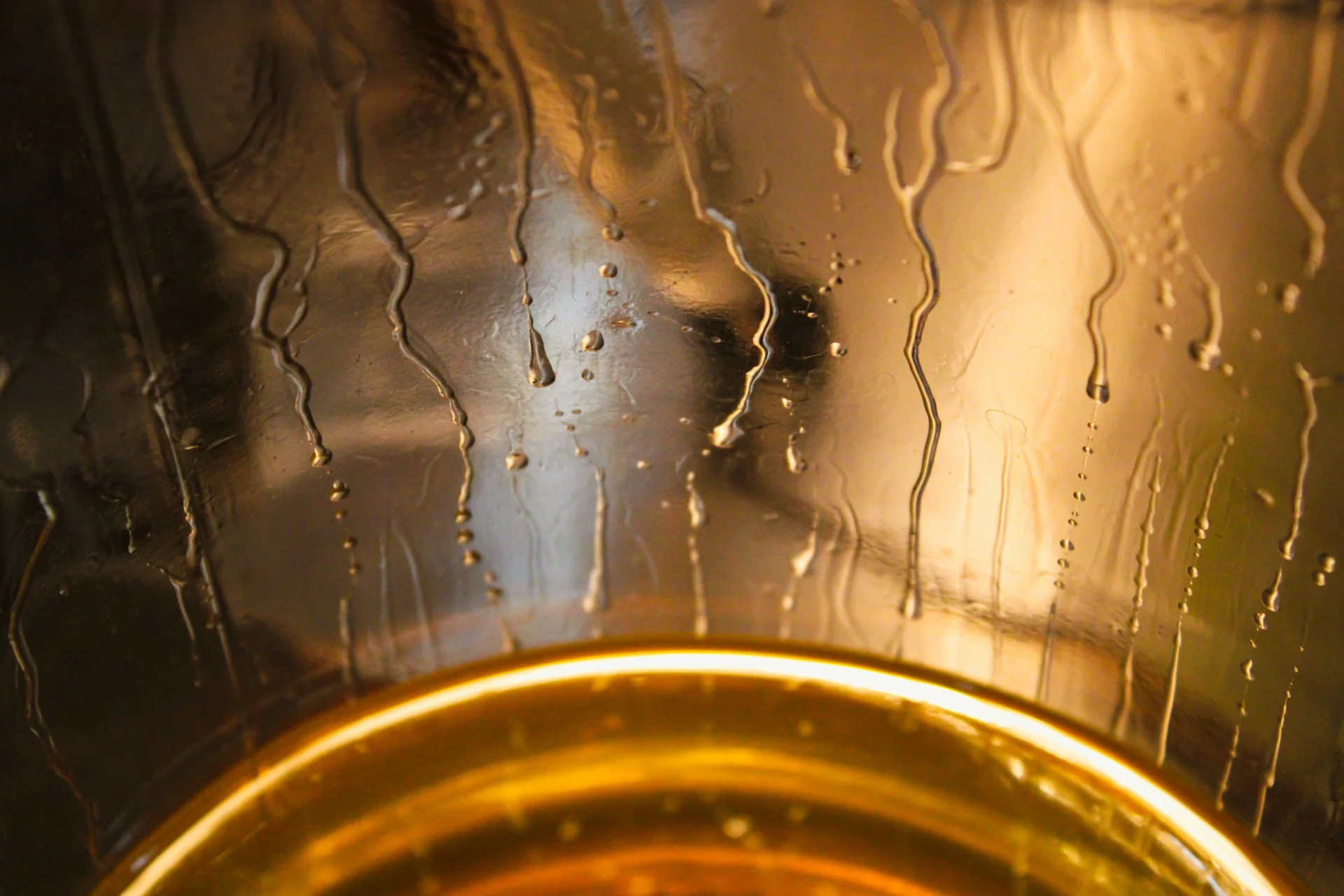Isoamyl butyrate is a chemical compound commonly used as a flavoring agent in various food and beverage products. Its fruity aroma, reminiscent of bananas, is a popular choice in the production of candies, chewing gum, and soft drinks. Beyond its applications in the food industry, Isoamyl butyrate is also utilized in the manufacturing of perfumes and cosmetics. Its pleasant scent and flavor profile make it a valuable ingredient in enhancing the sensory experience of everyday products consumed by individuals around the world.
Table of Contents:
- 💡 Commercial Applications
- ⚗️ Chemical & Physical Properties
- 🏭 Production & Procurement
- ⚠️ Safety Considerations
- 🔬 Potential Research Directions
- 🧪 Related Compounds
💡 Commercial Applications
Isoamyl butyrate, also known as isopentyl butyrate, is a colorless liquid ester with a fruity odor that is commonly used in the production of artificial fruit flavors. It is utilized in the food and beverage industry to add a banana-like aroma to various products, including candies, desserts, and beverages. Isoamyl butyrate is a valuable ingredient in food flavorings due to its strong and long-lasting scent profile.
In addition to its role in the flavor industry, Isoamyl butyrate has several industrial applications. It is used as a solvent in the manufacturing of lacquers, varnishes, and perfumes. The chemical properties of Isoamyl butyrate make it an effective carrier for fragrances, allowing for the even distribution of scents in various products. Furthermore, Isoamyl butyrate is used in the production of cosmetics, detergents, and cleaning agents for its pleasant aroma and solvency properties.
Isoamyl butyrate has minimal drug and medication applications due to its primarily commercial and industrial uses. However, some pharmaceuticals may incorporate Isoamyl butyrate as a flavoring agent in oral medications to mask unpleasant tastes. The compound’s fruity fragrance can help improve patient compliance by making the medicine more palatable. Despite its limited use in the pharmaceutical industry, Isoamyl butyrate plays a crucial role in enhancing the sensory experience of various consumer products.
⚗️ Chemical & Physical Properties
Isoamyl butyrate is a clear, colorless liquid with a pleasant fruity odor, often described as similar to bananas. This compound is commonly used as a flavoring agent due to its fruity aroma, which can enhance the taste of various food products.
The molar mass of isoamyl butyrate is approximately 172.25 g/mol, and its density is about 0.876 g/cm³ at room temperature. Compared to common food items, such as sugar (molar mass: 342.3 g/mol, density: 1.59 g/cm³) and salt (molar mass: 58.44 g/mol, density: 2.17 g/cm³), isoamyl butyrate has a lower molar mass and density.
Isoamyl butyrate has a melting point of around -78°C and a boiling point of approximately 151°C. In comparison to common food items like butter (melting point: 32-35°C, boiling point: 250°C) and chocolate (melting point: 34-38°C, boiling point: 160°C), isoamyl butyrate has a lower melting and boiling point.
Isoamyl butyrate is slightly soluble in water, but more soluble in organic solvents like ethanol. It has a relatively low viscosity, making it easy to mix and distribute in food products. In contrast, common food items like sugar and salt are highly soluble in water and have higher viscosity compared to isoamyl butyrate.
🏭 Production & Procurement
Isoamyl butyrate is typically produced through the esterification reaction between isoamyl alcohol and butyric acid. This process involves the mixing of the two reagents in the presence of a catalyst, such as sulfuric acid, which facilitates the formation of the desired ester.
Once Isoamyl butyrate is produced, it can be procured from chemical suppliers who specialize in the production and distribution of fine chemicals. The compound is typically available in liquid form and can be transported in sealed containers to prevent evaporation or degradation during transit.
For larger quantities of Isoamyl butyrate, it may be necessary to arrange for bulk transportation through specialized chemical shipping companies. These companies have the equipment and expertise needed to transport the compound safely and efficiently, ensuring that it reaches its destination intact and ready for use in various applications.
⚠️ Safety Considerations
Safety considerations for Isoamyl butyrate, a commonly used flavoring agent, primarily revolve around its potential flammability and reactivity with certain chemicals. It is important to store Isoamyl butyrate in a cool, well-ventilated area away from sources of ignition or heat to prevent any risk of fire or explosion. Additionally, when handling this substance, proper personal protective equipment such as gloves and goggles should be worn to avoid skin and eye irritation. In case of accidental ingestion, inhalation, or contact with the skin, immediate medical attention should be sought.
Hazard statements for Isoamyl butyrate include “Causes skin irritation,” which indicates that direct contact with this substance may lead to irritation and inflammation of the skin. “May cause drowsiness or dizziness” is another hazard statement, suggesting that prolonged exposure to Isoamyl butyrate may result in symptoms such as fatigue and lightheadedness. It is important to take these potential hazards into consideration when working with or around this chemical to ensure the safety of individuals.
Precautionary statements for Isoamyl butyrate include “Wear protective gloves/eye protection/face protection” to prevent any potential skin or eye irritation during handling. “If inhaled, remove person to fresh air and keep comfortable for breathing” advises individuals to move to a well-ventilated area in case of inhalation exposure. Additionally, “Store locked up” recommends storing Isoamyl butyrate in a secure location to prevent unauthorized access or accidental spills. Following these precautionary statements will help minimize the risks associated with working with Isoamyl butyrate.
🔬 Potential Research Directions
Research into Isoamyl butyrate, a compound commonly used in food and fragrance industries, may focus on its chemical properties and potential applications in various products. Studies could investigate its flavor characteristics and how they interact with other compounds. Additionally, research may explore the effects of Isoamyl butyrate on human sensory perception and consumer preferences.
Further investigations may delve into the synthesis methods of Isoamyl butyrate to optimize production efficiency and yield. Studies could examine different catalysts and reaction conditions to enhance the synthesis process. Researchers may also explore alternative sources of raw materials for the production of Isoamyl butyrate to improve sustainability and reduce environmental impact.
Additionally, research may explore the pharmaceutical potential of Isoamyl butyrate, such as its antimicrobial properties or its possible application in drug delivery systems. Studies could investigate its interaction with biological systems and its potential therapeutic effects. Furthermore, research may focus on the safety and regulatory aspects of Isoamyl butyrate to ensure its compliance with industry standards and regulations.
🧪 Related Compounds
One similar compound to Isoamyl butyrate is Isopentyl butyrate. The molecular structure of Isopentyl butyrate is similar to Isoamyl butyrate, with the only difference being in the branching of the carbon chain. Isopentyl butyrate has the same functional groups of an ester and an alkyl group, giving it a fruity odor like Isoamyl butyrate.
Another comparable compound is Amyl butyrate. Amyl butyrate has a longer carbon chain than Isoamyl butyrate, resulting in a slightly different odor profile. However, both compounds share the same ester functional group, providing them with similar chemical properties. Amyl butyrate is commonly used in the fragrance industry for its fruity scent, much like Isoamyl butyrate.
A related compound is Butyl isovalerate. Butyl isovalerate has a different ester group arrangement compared to Isoamyl butyrate, but it still possesses the characteristic fruity odor associated with this type of compound. Both Butyl isovalerate and Isoamyl butyrate are commonly found in various fruits and are used in the production of flavored products. Their structural similarities give them similar chemical properties and applications in the food and fragrance industries.







